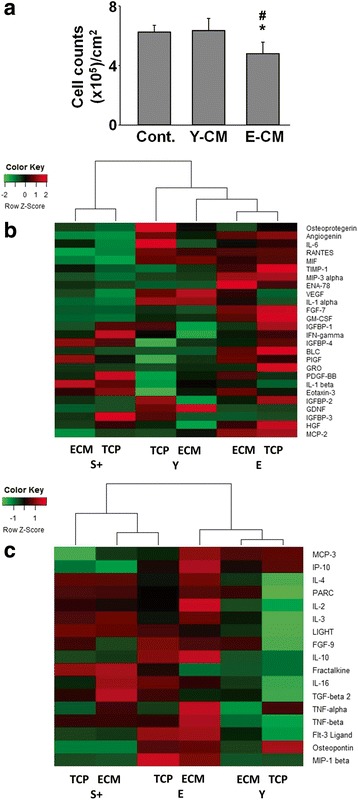Fig. 3.

Elderly MSCs produce cytokines, associated with SASP, capable of inhibiting young MSC proliferation. a Conditioned media (CM) were collected from 7-day cultures of young and elderly MSCs on TCP and then added to naïve cultures of young MSCs at a ratio of 1 part CM:2 parts fresh media. Proliferation after 7 days was less in cultures treated with CM from elderly MSCs, suggesting the presence of inhibitory factors (n = 6 donors (three elderly, three young)). b CM from young, small(+), and elderly MSCs cultured for 7 days on TCP or ECM were analyzed using a cytokine array and a heatmap of the SASP-associated cytokines prepared. Small(+) cells expressed less SASP-related cytokines than either young or elderly MSCs. Assays were performed in duplicate using pooled CM (n = 3 donors/group). c CM were collected, analyzed as in (b), and a heatmap of the non-SASP-associated cytokines prepared. Non-SASP-related cytokine production by small(+) cells was similar to that of elderly MSCs, suggesting that some characteristics of the elderly heritage remain. Assays were performed in duplicate using pooled CM (n = 3 donors/group). *P < 0.05, vs CM from young MSCs; #P < 0.05, vs control media. S small, Y young, E elderly, ECM extracellular matrix, TCP tissue culture plastic
